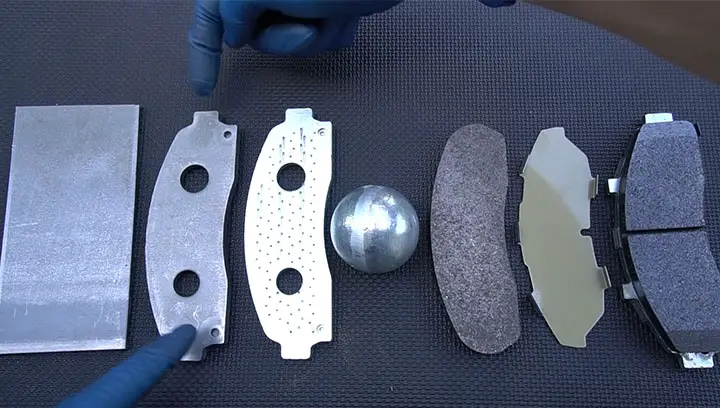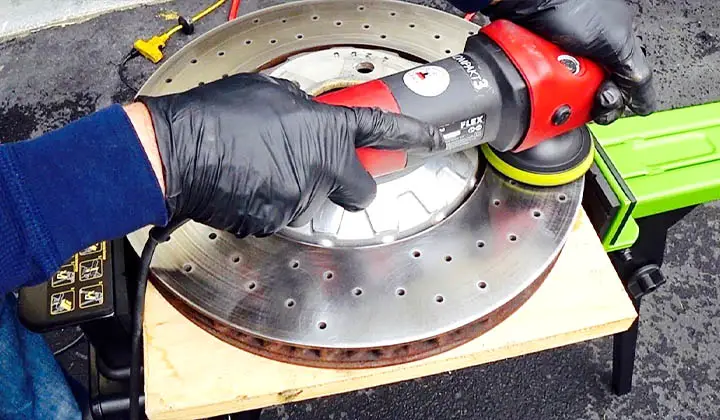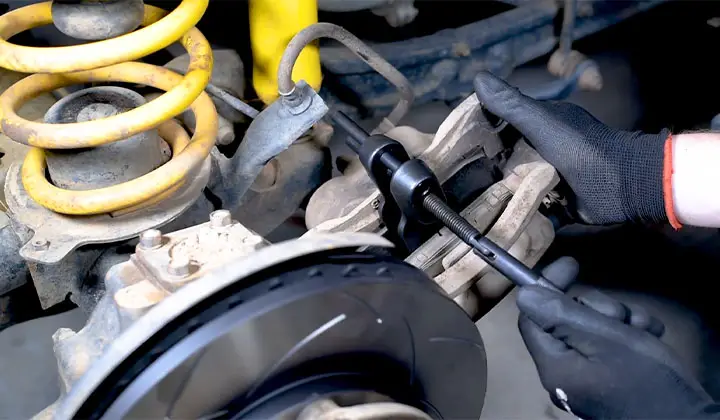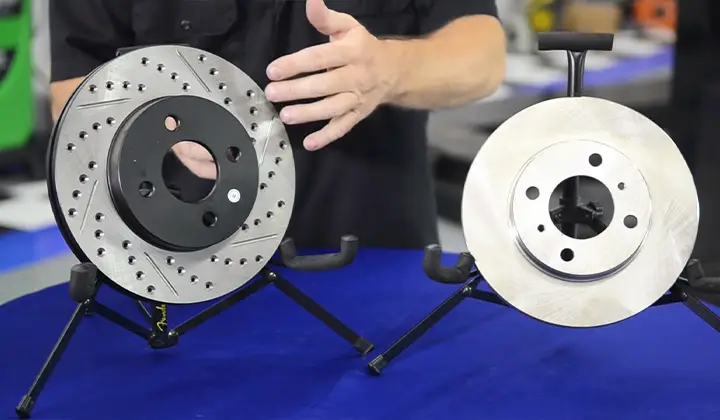It’s important to use the right brake pads for your new rotor. If you use old pads, they may not work as well on the new rotor and could even cause them to wear out faster.
Actually, it depends on the type of brake pads that you are using and the specific rotors that your vehicle has. However, generally speaking, if you are using standard brake pads with a metal backing, then you can likely use them on new rotors without any problems.
If you are using performance or racing brakes which have a rubber backing, however, then it may be important to replace the pads altogether in order to ensure optimal braking performance.
Brake pads wear down over time and can cause brake issues on new rotors. If you plan to use your old pads, be sure to clean the rotor before applying them. Be aware of the type of rotor your car has; some require a specific pad size or material.
Contents
Can You Use Old Brake Pads on New Rotors
Brake pads are a relatively cheap and easy fix for the car. Brake pads are attached to the metal brake rotor, which is what slows down a car when you apply the brakes. New brake rotors are made from a ceramic material that can withstand heat better than metal.
When you replace your brake pads, it is important to make sure that you use new brake rotors as well because old ones might not work with new brake pads.
If you have new brake pads, you should use them on your new rotor. Old brake pads can damage the rotors and cause them to wear out prematurely.
Properly Bedded and Used Over Time
When installing new brake pads, it is important to ensure that they are properly embedded in the rotor surface. Brake pads should be firmly attached to the rotor so that they do not move or wear down over time.
Additionally, make sure your brake rotors are coated with high-quality material so that they stop the pad from sticking to the disc and causing friction.
Brake Pad Material
Different types of brakes use different materials when making their pads. Some use rubber while others use metal plates or discs (steel).

It is important to choose a compatible pad material for your specific type of braking system in order to get optimum performance.
Brake Rotor Surface
The final step in getting great braking performance is choosing a quality brake rotor surface. This will help disperse heat evenly throughout the rotor, which will result in longer stopping distances and decreased wear on your brakes overall

You may be able to use old brake pads on new rotors if they have the same material and thickness. However, you should always replace them when your brakes are serviced because wear can cause SIGNIFICANT damage to the rotor and wheel.
Install New Pads on the Old Rotors
When your brake pads need to be replaced, it is important that you take care of the rotor as well. By replacing the pad and rotor at the same time, you will create a better stopping surface for your car’s brakes.

Before working on any part of your car’s braking system, make sure all hardware is properly installed and tightened down so there are no surprises while you’re trying to fix something. Accidents happen unexpectedly–avoid them by being prepared beforehand
Friction For Stopping Improves with Time
As your brake pads start to Show Signs of Wear, they may start creating too much friction when stopping your car from moving forward or backward.
Over time this can lead to a decreased braking performance in cold weather or during heavy rainstorms.
Type of rotors you are using
Rotors come in different shapes and sizes depending on the make and model of your vehicle; some cars require bigger rotors than others do because their engines generate more heat when driving downhill or at high speeds.

Check with your mechanic if you have any doubts about using old pads on a new rotor–it could save you from an expensive repair bill down the line. You may also find helpful tips online or in automotive publications such as Car & Driver or Road & Track.
If your rotor is too small, it can vibrate excessively and cause problems such as wobble while driving or grinding noise when turning corners.
Warning signs when brake pad replacement is needed
If your brake pads are starting to show signs of wear, it is time to replace them. While you can use old pads on new rotors, this will create friction and make it more difficult for the brakes to stop reliably.
It is important to know your car’s make and model before replacing parts on your vehicle. The following are some of the things you should consider before replacing parts on your car:
If your brake pads are starting to wear down, they may need to be replaced. This is a common issue that can cause the brakes to stop working properly.
If you notice this happening, it’s important to get them fixed as soon as possible so you don’t have any problems on the road.
If you experience any unusual noises from your brakes, this may be an indication that it’s time for new pads and rotors.
Other indications might include: locking up during braking, poor stopping power, or trouble starting the car in cold weather due to frozen brakes.
If you’re having trouble braking, there may be a problem with your brake pads or the rotors.
You can check these items by doing an inspection yourself or calling a mechanic to do it for you. If either of those things is damaged, a replacement is needed.
What kind of brakes you are using
The type of brake pads that you need to replace depends on the make and model of your car. The most common types include metal-lined or rubber discs with drums, though there are many other varieties available as well.
The vehicle will not stop on a hill
If your brake system is failing, it may be unable to stop the vehicle on a steep incline. This can lead to an accident or worse.
If you notice that your brakes are no longer working properly, it’s important to take action and have them replaced as soon as possible.
Brakes feel soft or spongy
If your brake pads are worn out, they will likely feel softer than usual when you apply pressure to the pedal. Additionally, if there is significant rust or corrosion in the braking system, sponginess may also be present due to a lack of friction between the pad and disc surface.
Noise from front wheels during braking
When you step on the brakes, noise should come from both front tires simultaneously – but if one or more of these noises disappear when you try to apply pressure to the pedals, this could mean that your rear brake pads are also worn out and need replacement (or even just adjustment).
FAQs
Can You Mix and Match Brake Pads and Rotors?
You can mix and match brake pads and rotors but it’s not recommended.
There are certain guidelines that you need to follow when you’re using one or both of these parts because they don’t always play well with each other.
Can You Use Any Brake Pads with Any Rotors?
Brake pads are made to work with specific rotors. The type of brake pads you use depends on the type of rotor you have.
How Many Miles Do Rotors Last?
A typical rotor can last up to 5,000 hours in a light helicopter and up to 10,000 hours in a heavy helicopter.
How Often Should Rotors Be Replaced?
The lifespan of a rotor can vary depending on its use and location. In general, it is advisable to replace them every 5-7 years for most turbines.
How Much Should Rotors Cost?
The cost of a rotor depends on what type of rotors you are buying. For example, if you are buying a high-quality carbon fiber rotor with ceramic bearings, then the price will be higher than if you were buying a low-quality metal rotor with plastic bearings.
Can You Use Front Rotors on Rear?
Rear and Front rotors aren’t the same. You can’t use like that. Rear rotors can’t be used on front wheels, and they might not work as efficiently as front rotors.
Conclusion
It depends on the make and model of your vehicle, as well as the type of brake pads that you are using. Some newer vehicles may not be compatible with older brake pads, while other Vehicles may work fine with old pads.
Ultimately it is best to consult a mechanic or dealership for specific information about compatibility between different parts and accessories.
It ultimately depends on the make and model of your car, as well as the brake pads that you are using. Some car models may require new brake pads while others may be able to use older ones.
Ultimately it is best to consult with a mechanic or dealership before making any changes to your brakes.
